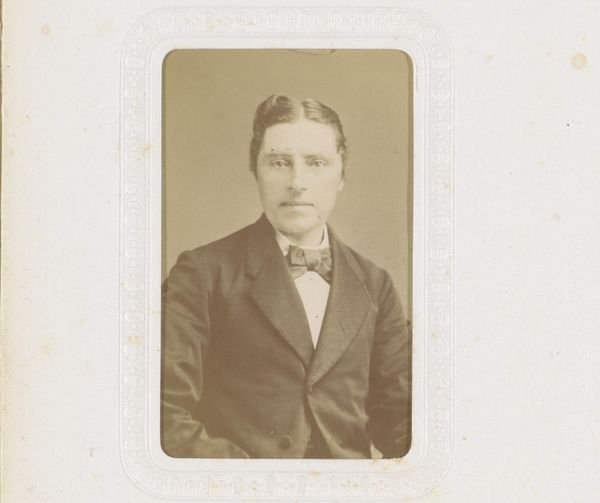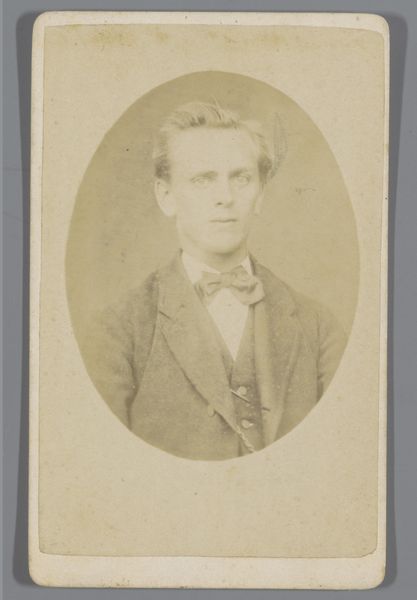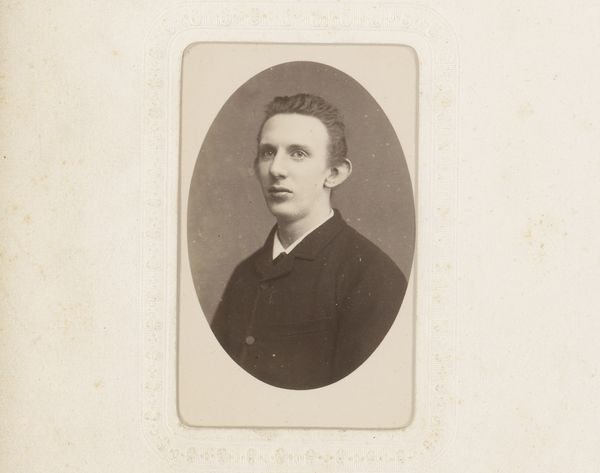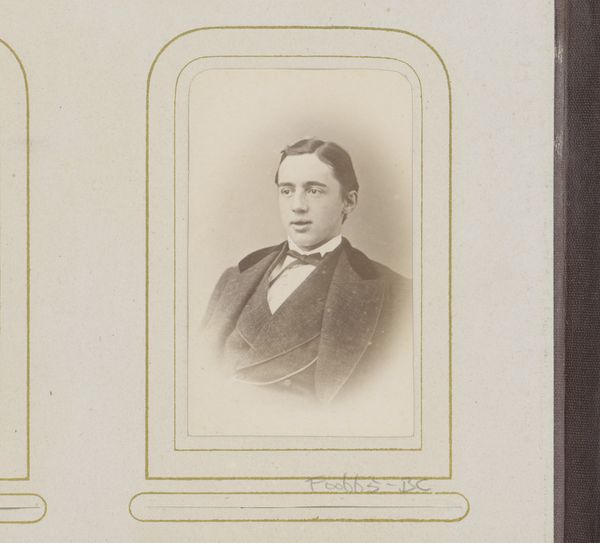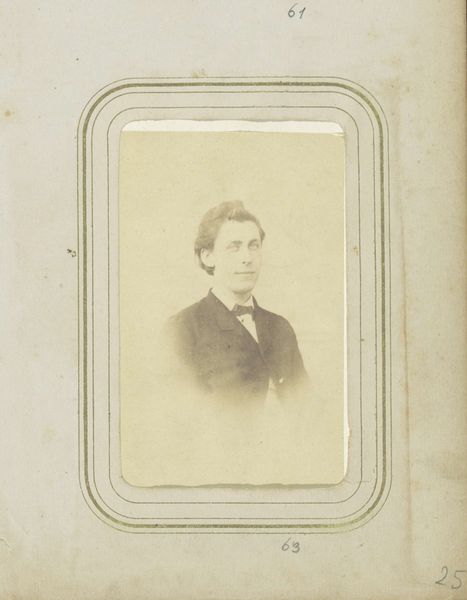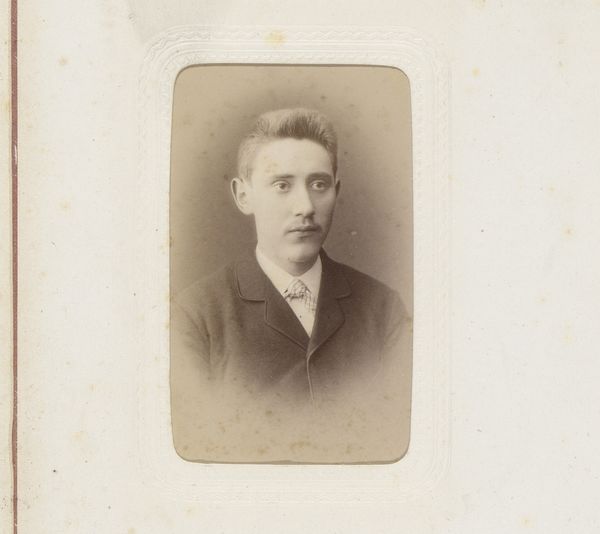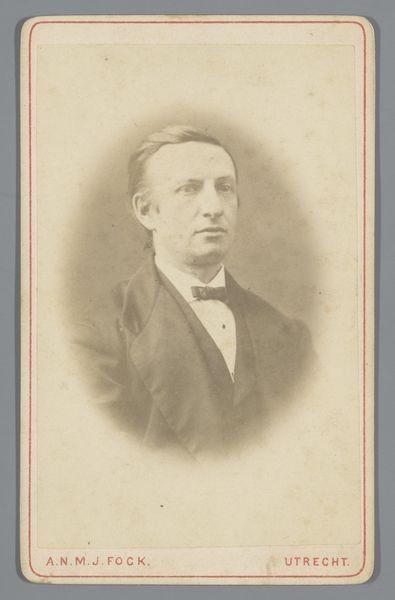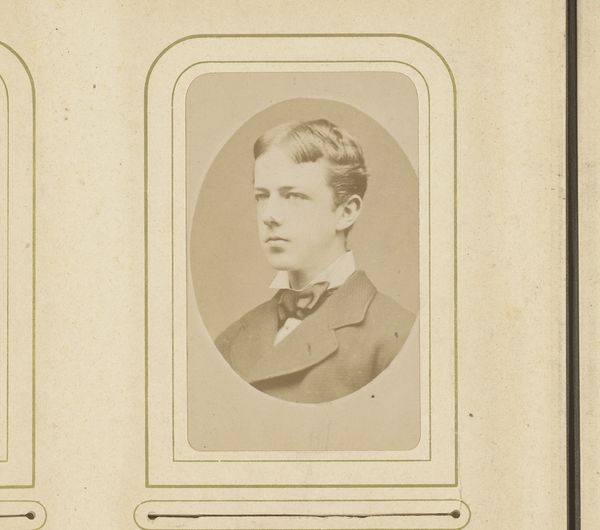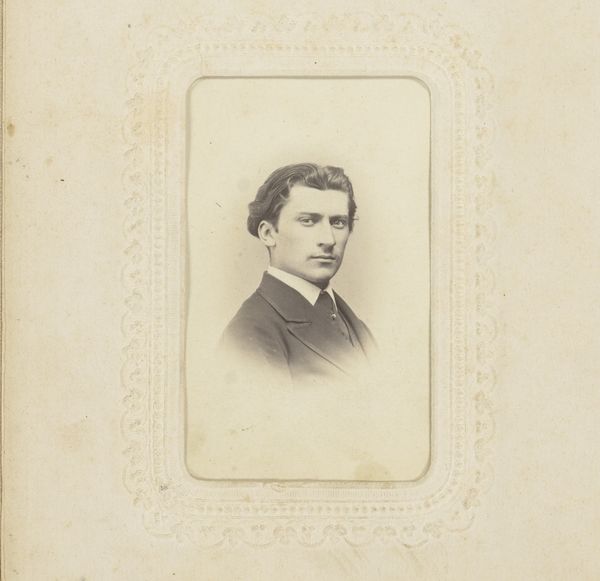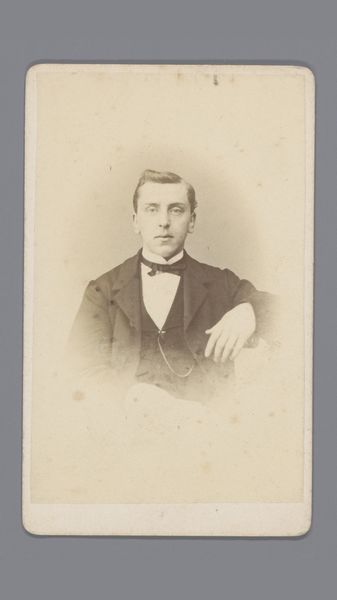
Portret van een man, aangeduid als De Bruyn Kops 1861 - 1900
0:00
0:00
photography, gelatin-silver-print
#
portrait
#
photography
#
historical photography
#
portrait reference
#
gelatin-silver-print
#
genre-painting
Dimensions: height 82 mm, width 50 mm
Copyright: Rijks Museum: Open Domain
Carel Eduard Westerborg made this portrait of De Bruyn Kops using photographic paper, likely albumen silver, a popular choice in the 19th century. The albumen process involves coating paper with egg white and silver nitrate, creating a surface sensitive to light. This allowed for detailed images to be captured, but it was also labor-intensive, requiring careful preparation and handling of materials. The warm brown tone of the photograph is characteristic of the albumen print, a result of the chemical reactions during development. This process, while innovative, was also tied to the rise of industrial capitalism and the commodification of photography. Studios churned out portraits, making images accessible but also transforming artistic expression into a commercial enterprise. Considering the materials and the making helps us to appreciate the photograph not just as a representation, but also as a product of a specific time and place, shaped by technology, labor, and social forces.
Comments
No comments
Be the first to comment and join the conversation on the ultimate creative platform.
